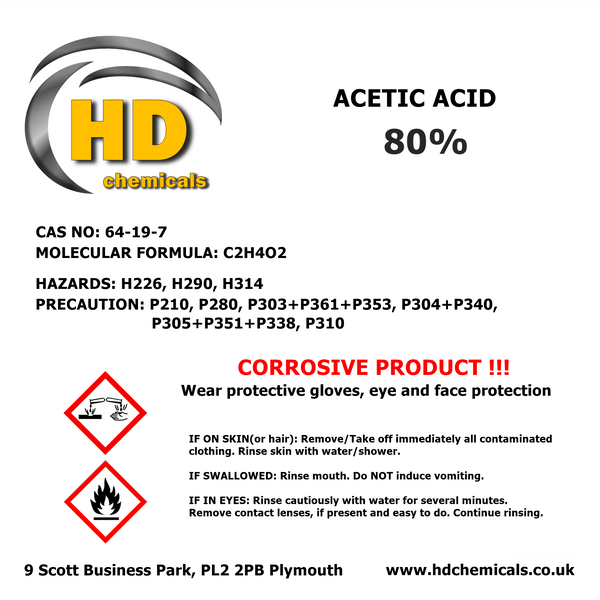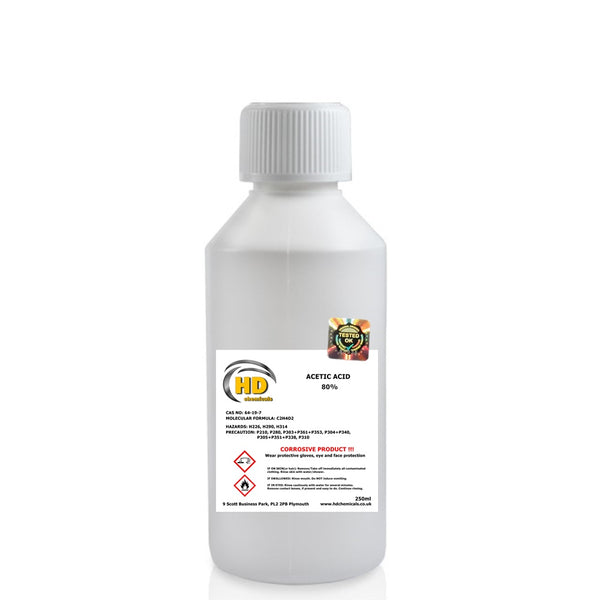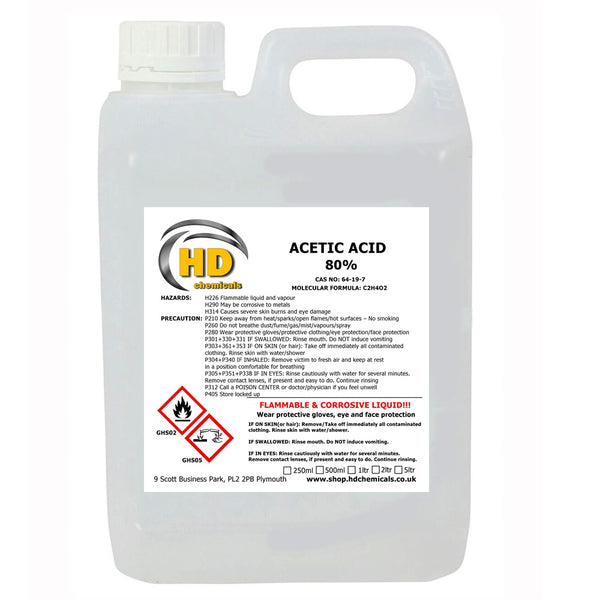Acetic Acid 80%
Acetic Acid 80%
Acetic Acid 80% Technical Grade is a versatile chemical widely used in cleaning, descaling, industrial processing, and laboratory applications. Available in 250ml, 500ml, 1L, and 2L bottles, this high-strength solution delivers reliable performance for professional and household use.
Key Features
-
Concentrated 80% acetic acid solution
-
Technical grade for industrial and laboratory use
-
Available in convenient bottle sizes (250ml–2L)
-
Powerful cleaning and descaling properties
-
Easy-to-use and cost-effective solution
Uses
-
Industrial cleaning and descaling of machinery
-
Laboratory chemical reagent and experiments
-
Surface sterilisation in technical environments
-
Rust and limescale removal
-
pH adjustment in non-food applications
📋 Product Details
-
Weight: Depending on selected size (250ml, 500ml, 1L, 2L)
-
Grade: Technical
-
Form: Liquid
📈 Other Names
Ethanoic Acid 80%, Glacial Acetic Diluted, Industrial Vinegar Solution, Acidic Descaler 80%, Acetic Cleaning Solution 80%
Step-by-Step Uses
-
Descaling kettles and machinery:
-
Dilute 50ml of Acetic Acid 80% with 450ml of water.
-
Pour into the equipment and leave for 30 minutes.
-
Rinse thoroughly with clean water.
-
-
Rust removal from metal tools:
-
Apply 20–30ml directly onto the rusted surface.
-
Scrub gently with a brush.
-
Rinse with water and dry completely.
-
-
Surface sterilisation:
-
Mix 10ml of Acetic Acid 80% with 90ml of water.
-
Wipe surfaces with a clean cloth soaked in the solution.
-
Allow to air dry.
-
-
Laboratory reagent:
-
Use in controlled amounts as per lab protocol.
-
Always handle with gloves and goggles.
-
-
Drain cleaning:
-
Pour 100ml of Acetic Acid 80% into the drain.
-
Leave for 15–20 minutes.
-
Flush with 1–2 litres of water.
-
⚠️ Safety Note: Always wear protective gloves and goggles when handling Acetic Acid 80%. Store in a cool, dry place away from children and pets.
❓ FAQ
Q1: Is this Acetic Acid 80% food grade?
A1: No, this product is technical grade and not suitable for consumption.
Q2: Can I use this to descale my coffee machine?
A2: Yes, but ensure you dilute it properly and rinse thoroughly before reuse.
Q3: How should I store Acetic Acid 80%?
A3: Store in a tightly sealed container, away from heat and direct sunlight.
Q4: What precautions should I take when using it?
A4: Always wear protective gloves and goggles and work in a ventilated area.
Q5: Does it have a strong smell?
A5: Yes, Acetic Acid has a pungent vinegar-like odour. Ensure good ventilation when using.












